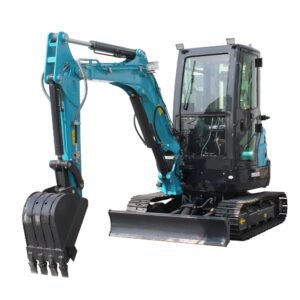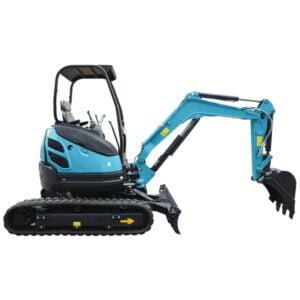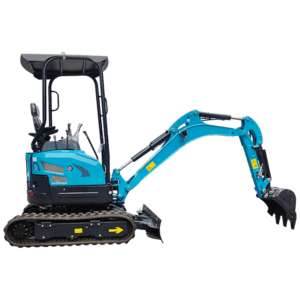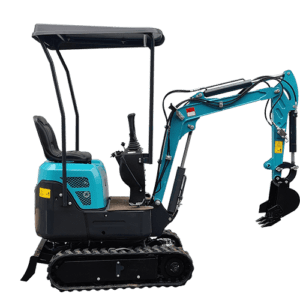E-mail: [email protected] WhatsApp: 8618266768780
Les avantages des chenilles en caoutchouc pour excavatrices dans la construction
Bienvenue sur mon blog !
Avant de plonger dans le contenu, j'aimerais que vous me rejoigniez sur mes plateformes de médias sociaux où je partage plus d'informations, interagis avec la communauté et publie des mises à jour. Voici comment vous pouvez me contacter :
Facebook : https://www.facebook.com/profile.php?id=100072217509763
LinkedIn : https://www.linkedin.com/company/74949059/admin/dashboard/
YouTube :https://www.youtube.com/@tractormanufacturer-lc5qz
TikTok : https://www.tiktok.com/@tractormanufacturer
Commençons maintenant notre voyage ensemble. J'espère que vous trouverez le contenu ici instructif, engageant et utile.
Introduction
Dans le monde de la construction, le choix du bon équipement est crucial pour l'efficacité, la sécurité et la réussite des projets. La chenille pour excavatrice est l'un de ces composants essentiels. Si les chenilles en acier ont traditionnellement été la solution de prédilection, les chenilles en caoutchouc gagnent en popularité dans le secteur. L'adoption des chenilles en caoutchouc est motivée par leur polyvalence, leur rentabilité et leur capacité à minimiser les perturbations du sol. Ce guide complet explore les avantages des chenilles en caoutchouc pour excavatrices et explique pourquoi elles deviennent un choix privilégié pour diverses applications de construction.
Compréhension Excavatrice Pistes

Que sont les chenilles d’excavatrice ?
Les chenilles d'excavatrice sont un élément essentiel du châssis de l'engin, assurant traction et mobilité sur différents types de terrain. Il existe deux principaux types de chenilles : en acier et en caoutchouc. Les chenilles en acier sont souvent utilisées pour les applications lourdes, tandis que les chenilles en caoutchouc sont de plus en plus populaires pour leur flexibilité, la réduction des dommages au sol et leurs faibles coûts d'entretien.
Chenilles d'excavatrice en acier ou en caoutchouc
Si les chenilles d'excavatrice en acier et en caoutchouc ont la même fonction fondamentale : assurer la stabilité et la mobilité, chacune présente des avantages distincts selon les besoins du projet. Les chenilles en acier sont privilégiées pour les applications lourdes, comme l'exploitation minière et la démolition, où la durabilité est primordiale. Cependant, les chenilles en caoutchouc sont de plus en plus utilisées dans les projets urbains et résidentiels en raison de leur légèreté, de leur fonctionnement plus silencieux et de leur capacité à se déplacer sur des surfaces sensibles sans causer de dommages.
| Fonctionnalité | chenilles en acier | Chenilles en caoutchouc |
|---|---|---|
| Durabilité | Élevé, mais peut endommager les surfaces sensibles | Moins durable, mais plus flexible |
| Poids | Plus lourd, peut affecter le rendement énergétique | Plus léger, améliorant l'économie de carburant |
| Niveaux de bruit | Plus fort, surtout sur les surfaces dures | Plus silencieux, idéal pour les zones urbaines |
| Protection du sol | Peut endommager les surfaces pavées | Doux sur les surfaces molles et pavées |
| Coût | Coût initial plus élevé | Coût initial inférieur, mais remplacement plus fréquent |
Comme le montre le tableau, les deux types de chenilles pour excavatrices présentent des avantages et des inconvénients spécifiques. Pour la plupart des applications de construction modernes, les chenilles en caoutchouc offrent un équilibre parfait entre durabilité, économies et protection de l'environnement.
Les avantages des chenilles en caoutchouc pour excavatrices
1. Réduction des perturbations du sol
L'un des principaux avantages des chenilles en caoutchouc pour excavatrices est leur capacité à minimiser les perturbations du sol. Les projets de construction impliquent souvent de travailler dans des zones sensibles, telles que les quartiers résidentiels, les parcs ou les sols meubles. Les chenilles en acier peuvent causer des dommages importants à ces environnements, tandis que les chenilles en caoutchouc répartissent le poids de l'excavatrice de manière plus uniforme, évitant ainsi la formation d'ornières, de nids-de-poule et d'autres dommages au sol.
Cet impact réduit est particulièrement avantageux pour les travaux sur des surfaces finies comme l'asphalte ou le béton. Les chenilles en caoutchouc permettent d'éviter des réparations coûteuses sur les routes, les allées et les trottoirs, ce qui en fait un excellent choix pour les entrepreneurs travaillant en milieu urbain ou paysager.
2. Manœuvrabilité améliorée
Les chenilles en caoutchouc pour pelles offrent une traction et une flexibilité supérieures, permettant aux excavatrices de se déplacer plus facilement sur des terrains variés. Que ce soit sur des terrains accidentés, boueux ou en pente, les chenilles en caoutchouc offrent une meilleure adhérence, réduisant ainsi les risques de glissement. Cette maniabilité accrue permet aux opérateurs d'effectuer leurs tâches avec plus de précision et de contrôle, ce qui se traduit par une productivité accrue sur le chantier.
De plus, leur légèreté les rend idéales pour les excavatrices de petite taille ou compactes, souvent utilisées dans des espaces confinés ou sur des chantiers de petite envergure. La facilité de déplacement offerte par les chenilles en caoutchouc peut être un atout majeur pour les entrepreneurs travaillant sur des chantiers exigus où l'espace est limité.
3. Fonctionnement plus silencieux
Un autre avantage majeur des chenilles en caoutchouc pour pelles est leur fonctionnement plus silencieux. Les chenilles en acier peuvent générer un bruit important, notamment lorsqu'elles se déplacent sur des surfaces dures comme l'asphalte, le béton ou la roche. Ce bruit peut être gênant dans les zones résidentielles ou autres environnements soumis à des réglementations antibruit.
Les chenilles en caoutchouc, quant à elles, sont beaucoup plus silencieuses, ce qui les rend idéales pour les chantiers urbains où la réduction des nuisances sonores est primordiale. La réduction du niveau sonore profite non seulement à la communauté environnante, mais améliore également les conditions de travail des opérateurs et des travailleurs à proximité.
4. Coûts d'entretien et d'exploitation réduits
Les chenilles en caoutchouc pour excavatrices nécessitent généralement moins d'entretien que leurs homologues en acier. Les chenilles en acier sont plus sujettes à la rouille et à la corrosion, notamment dans les environnements humides ou corrosifs, ce qui entraîne des réparations fréquentes et des coûts plus élevés à long terme. Les chenilles en caoutchouc, bien que moins durables que celles en acier, sont conçues pour résister à des conditions environnementales très diverses et offrent un coût total de possession plus faible sur toute la durée de vie de l'excavatrice.
De plus, les chenilles en caoutchouc sont plus légères, ce qui contribue à réduire la consommation de carburant. Le poids réduit de la pelle permet d'améliorer le rendement énergétique, ce qui se traduit par des économies significatives sur les coûts d'exploitation à long terme. Les entrepreneurs souhaitant optimiser leur retour sur investissement trouveront dans les chenilles en caoutchouc une option rentable pour de nombreux types de projets de construction.
5. Polyvalence sur différents chantiers
Les chenilles en caoutchouc pour pelles sont incroyablement polyvalentes, ce qui les rend idéales pour un large éventail d'applications. De l'aménagement paysager résidentiel et de la construction urbaine à la démolition à petite échelle et aux travaux routiers, les chenilles en caoutchouc peuvent tout faire. Leur flexibilité et leur conception respectueuse du sol leur permettent de passer facilement d'un chantier à l'autre sans endommager l'environnement.
Cette polyvalence est particulièrement utile pour les entrepreneurs travaillant sur des projets nécessitant des déplacements fréquents entre différents sites. L'adaptabilité des chenilles en caoutchouc réduit le besoin de changer d'équipement ou d'effectuer des modifications, ce qui permet des flux de travail plus efficaces et une exécution des projets plus rapide.
Considérations clés lors du choix du caoutchouc Excavatrice Pistes
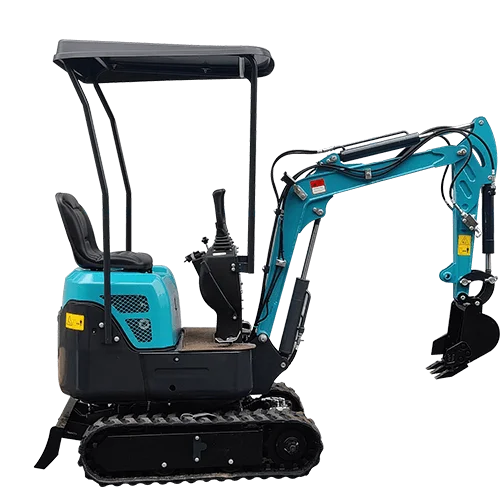
Lors de la sélection des chenilles d'excavatrice en caoutchouc pour votre machine, plusieurs facteurs doivent être pris en compte pour garantir des performances et une longévité optimales.
1. Taille et compatibilité des pistes
L'un des facteurs les plus importants est de choisir la taille et le type de chenilles adaptés à votre pelle. La chenille doit être compatible avec la marque et le modèle de votre machine pour garantir un ajustement et un fonctionnement corrects. Chaque pelle a des spécifications différentes, et l'utilisation de chenilles inadaptées peut entraîner des problèmes de performances, voire endommager le train de roulement.
2. Largeur de la voie
La largeur des chenilles de la pelle joue également un rôle crucial dans ses performances. Des chenilles plus larges offrent une meilleure stabilité et une pression au sol plus faible, ce qui les rend idéales pour les terrains meubles ou accidentés. Des chenilles plus étroites, bien que moins stables, offrent une plus grande maniabilité et sont mieux adaptées aux espaces restreints ou aux pelles plus compactes.
3. Motif de piste
Les chenilles en caoutchouc sont disponibles avec différents motifs de sculpture adaptés à différents types de terrain. Tenez compte du type de surface sur laquelle vous travaillerez le plus fréquemment. Par exemple, les chenilles aux sculptures plus profondes sont plus adaptées aux conditions boueuses ou humides, tandis que les chenilles plus lisses sont idéales pour les surfaces pavées ou l'utilisation en intérieur.
Conclusion
Les avantages des chenilles en caoutchouc pour pelles hydrauliques dans le secteur de la construction sont évidents. De la réduction des perturbations du sol à l'amélioration de la maniabilité, en passant par un fonctionnement plus silencieux et des coûts de maintenance réduits, les chenilles en caoutchouc offrent de nombreux avantages par rapport aux chenilles en acier traditionnelles. Leur polyvalence dans un large éventail d'applications en fait un excellent choix pour les entrepreneurs cherchant à améliorer leur efficacité et à réduire leurs coûts d'exploitation. En sélectionnant soigneusement la taille, la largeur et le profil de la bande de roulement adaptés à votre machine, vous optimiserez les performances de vos chenilles en caoutchouc et assurerez un succès durable sur le chantier.
FAQ
Quels sont les avantages des chenilles d’excavatrice en caoutchouc par rapport aux chenilles en acier ?
Les chenilles en caoutchouc pour pelles offrent plusieurs avantages par rapport aux chenilles en acier, notamment une réduction des perturbations du sol, un fonctionnement plus silencieux, une meilleure efficacité énergétique et des coûts de maintenance réduits. Elles sont également plus polyvalentes, ce qui les rend adaptées à un large éventail d'applications de construction.
Quelle est la durée de vie des chenilles en caoutchouc des excavatrices ?
La durée de vie des chenilles en caoutchouc pour excavatrices varie en fonction de l'utilisation, du terrain et de l'entretien. En moyenne, les chenilles en caoutchouc durent entre 1 200 et 2 000 heures. Un entretien et une maintenance appropriés peuvent prolonger leur durée de vie.
Les chenilles en caoutchouc peuvent-elles être utilisées sur tous les types de terrains ?
Les chenilles en caoutchouc conviennent à une grande variété de terrains, notamment la terre, la boue, l'herbe et les surfaces pavées. Cependant, elles peuvent ne pas être aussi durables que les chenilles en acier dans des conditions extrêmement difficiles ou abrasives, comme le gravier ou les terrains rocailleux.
Comment entretenir les chenilles en caoutchouc d'une excavatrice ?
Un nettoyage régulier, une tension adéquate et un contrôle de l'usure sont essentiels à l'entretien des chenilles en caoutchouc d'une pelle. Évitez d'utiliser la machine sur des surfaces susceptibles de provoquer une usure excessive, comme des roches ou des débris tranchants.
Les chenilles en caoutchouc sont-elles plus chères que les chenilles en acier ?
Les chenilles en caoutchouc sont généralement moins chères à l'achat que les chenilles en acier, mais leur remplacement peut nécessiter plus de fréquence. Cependant, leurs coûts d'entretien réduits et leur meilleur rendement énergétique en font souvent une option rentable à long terme.
À propos de nous
Shandong Qilu Industrial Co., Ltd. est un fabricant et exportateur professionnel intégrant le développement et la production d'excavatrices, de chargeurs et de tracteurs. Nous fournissons le meilleur service, absolument.
Messages récents
Démo vidéo
-1.png)
Contactez-nous aujourd'hui !
Une question, un devis ou une demande ? Cliquez sur le bouton pour envoyer le message.
Qilu Industrial sera toujours là pour vous aider.

